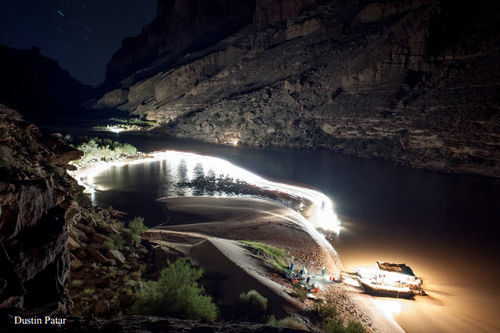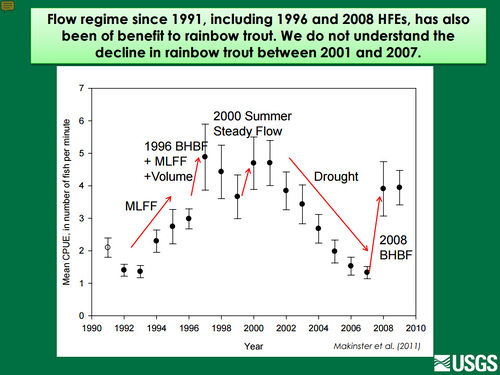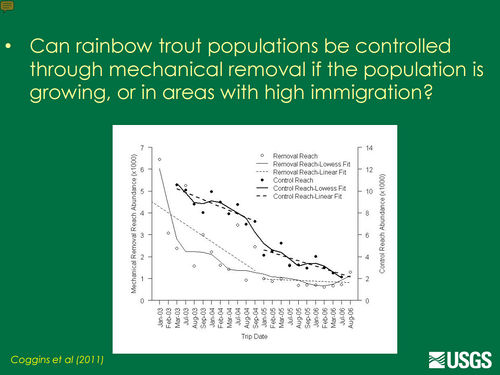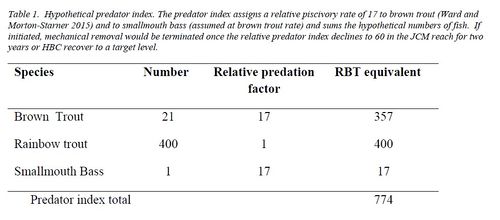Difference between revisions of "Trout Reduction Efforts"
Cellsworth (Talk | contribs) |
Cellsworth (Talk | contribs) |
||
| Line 17: | Line 17: | ||
</table> | </table> | ||
| + | [[File:NatalOrigins.jpg|center|500px]] | ||
<!-- | <!-- | ||
| Line 22: | Line 23: | ||
------------Portal list on righthand side----------> | ------------Portal list on righthand side----------> | ||
|style="width:60%; font-size:120%;"| | |style="width:60%; font-size:120%;"| | ||
| + | |||
| + | ==Findings from the [[Natal Origins Project (NO)]] Project== | ||
| + | *There is a low probability for an individual rainbow trout to move large distances. | ||
| + | *Abundance is a key factor: the more rainbow trout upstream in the Lees Ferry reach = more trout will move downstream to the LCR reach in search of unoccupied habitat | ||
| + | *Condition may be a secondary factor: when food resources become limited, rainbow trout will move downstream in search of food | ||
| + | *Recruitment in the reach below the LCR can be accounted for solely by immigrants from upstream sources | ||
| + | *Food limitation led to the collapse in the trout population, and by extension also likely happened in the downstream reaches. | ||
| + | *Inflow hydrology and reservoir limnology likely govern the quality and quantity of nutrients supplied to the downstream river segments. | ||
| + | *[http://gcdamp.com/index.php?title=Nutrients Nutrient limitation] is hypothesized as being the “BIG HAMMER” to the riverine ecosystem, which needs to be evaluated in greater detail in future research. [https://www.usbr.gov/uc/rm/amp/twg/mtgs/17jan26/AR16_Yard.pdf] | ||
Revision as of 11:50, 25 May 2017
|
|
Findings from the Natal Origins Project (NO) Project
|
| -- |
-- |
-- |
|---|
Coggins et al. 2011.Our results suggest that removal efforts were successful in rapidly shifting the fish community from one dominated numerically by nonnative species to one dominated by native species. Additionally, increases in juvenile native fish abundance within the removal reach suggest that removal efforts may have promoted greater survival and recruitment. However, drought-induced increases in river water temperature and a systemwide decrease in rainbow trout abundance concurrent with our experiment made it difficult to determine the cause of the apparent increase in juvenile native fish survival and recruitment. |
|



